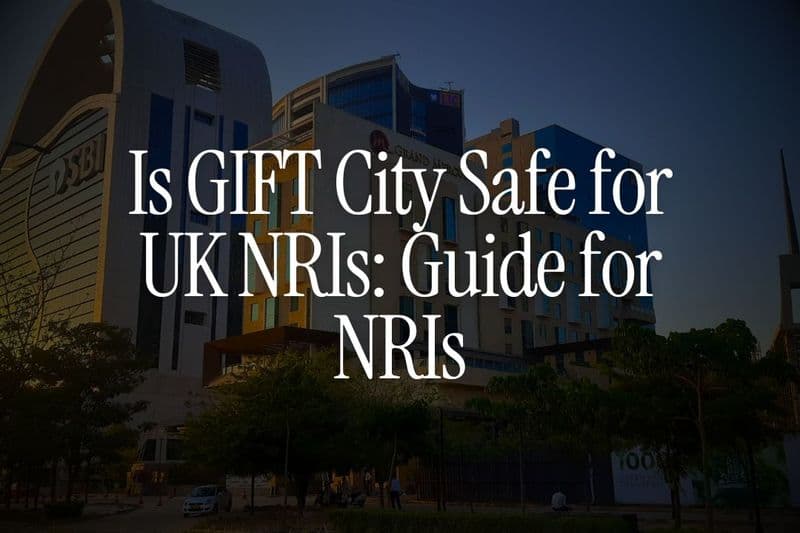
Three months ago, Rajesh called me from Dubai. He's 48, has saved $300,000 for retirement, and planned to move back to Bangalore in five years.
"Ankur, I've done the math," he said confidently.
"This converts to ₹2.5 crore. At 7% FD rates, I'll get ₹1.5 lakhs monthly.
That's enough, right?"
I had to give him uncomfortable news: "Rajesh, by the time you retire in 2030, your ₹1.5 lakh will feel like ₹1 lakh today. And by the time you're 70 in 2047, it'll feel like ₹50,000. You haven't accounted for inflation."
His response? "But inflation is only 2-3% now. I read it in the news."
That's when I showed him the real numbers. India's general inflation might be at historic lows of 3.60% as of August 2025, but the inflation that actually matters to retirees - healthcare costs - is running at a staggering 14% annually, the highest in Asia.
Inflation is the silent thief that steals your retirement dreams. While you're busy earning dollars in the UAE, inflation back in India is quietly eating away at what your savings will actually buy.
This article will show you how inflation, particularly in healthcare, impacts your retirement. We'll provide calculations and actionable strategies to help you build a financial plan that truly works.
Quick reality check: A ₹5 crore corpus that seems huge today will have the purchasing power of just ₹2 crore in 20 years at 6% inflation. Read on to learn how to avoid this trap.
Also Read: How much money does an NRI need to retire in India.
Why That "Low" 3.6% Inflation Number Is Misleading You
When you Google "India inflation rate 2025," you'll see headlines celebrating historic lows. The RBI projects just 2.6% inflation for FY 2025-26, down from over 6% in 2022. The UAE's inflation was at 2.43% as of August 2025 (source)
So what's the problem?
The problem is that these headline numbers hide what's actually happening to retiree expenses.
The Consumer Price Index (CPI) - the basis for inflation calculations - tracks a basket of goods that includes everything from mobile phones to clothing to transportation.
When petrol prices drop or electronics get cheaper (which they often do), the overall inflation number looks rosy.
But retirees don't spend money the same way working people do.
A typical working family's expense breakdown:
- Rent/EMI: 30%
- Food: 20%
- Transportation: 15%
- Education (kids): 15%
- Healthcare: 10%
- Entertainment/misc: 10%
A retiree's expense breakdown:
- Healthcare: 25-30%
- Food: 20%
- Housing maintenance: 15%
- Household help: 10%
- Utilities: 10%
- Travel/leisure: 10%
- Miscellaneous: 15%
Notice the difference? Healthcare jumps from 10% to 30% of expenses. And that's the category with the highest inflation rate: 14% annually.
Historical data shows that while India's average inflation over the past decade has been 5-6%, specific categories crucial to retirees have consistently run higher.
👉 Tip: Never plan retirement using headline inflation numbers. Use 7-8% for general expenses and 12-14% for healthcare to be safe. Better to overestimate and have surplus than underestimate and run out.
Also Read -How to Invest in Bonds - Beginner's Guide for NRIs
The Medical Inflation Time Bomb Sitting Under Your Retirement
Let me show you some numbers that should scare you into action.
Current healthcare costs in India (2025):
- Health insurance for a 60-year-old couple: ₹1-1.5 lakhs/year
- ICU bed in a good private hospital: approximately ₹50,000 - ₹1 lakh/day (based on typical costs in top hospitals; exact figures vary but the stated range was overstated)
- Angioplasty: ₹2-4 lakhs
- Knee replacement: ₹3-5 lakhs
- Cancer treatment (full course): ₹8-20 lakhs
Source: Times of India Hdfcergo
Now apply 14% annual medical inflation to these numbers for 20 years (your retirement period from age 60 to 80):
Healthcare costs in 2045 (20 years from now):
- Health insurance for the same couple: ₹13-20 lakhs/year
- ICU bed per day: ₹21-27 lakhs/day
- Angioplasty: ₹27-54 lakhs
- Knee replacement: ₹40-67 lakhs
- Cancer treatment: ₹1-2.7 crore
These aren't hypothetical numbers. Medical inflation in India has consistently run at 10-14% for the past decade, driven by:
Technology advancements: Modern treatments using AI, robotic surgery, and advanced diagnostics cost 3-5X more than traditional methods. While outcomes improve, so do bills.
Shortage of healthcare professionals:India has approximately 1 doctor per 834 people (or 1.2 doctors per 1,000 people), based on registered allopathic doctors In rural areas, there's an 80% shortage of specialists. High demand, limited supply = rising prices.
Medical tourism boom: International patients paying in dollars/pounds push up prices at top-tier hospitals. India's position as a medical tourism hub means hospitals cater to global pricing, affecting local costs.
Chronic disease epidemic: The ACKO India Health Insurance Index 2024 reports that 35% of Indians have chronic conditions like diabetes, hypertension, or heart disease. These long-term conditions require ongoing expensive care.
Imported medical equipment: Most advanced equipment is imported, making it sensitive to both global prices and currency depreciation. A CT scan machine costing $500,000 becomes more expensive as the rupee weakens.
Here's what this means in practice:
Priya and Amit retired to Pune in 2020 with a ₹3 crore corpus. They budgeted ₹30,000/month for healthcare based on their current health insurance premium of ₹25,000/year and some buffer.
By 2025, their health insurance alone costs ₹1.2 lakhs/year. Amit developed diabetes and needs regular monitoring (₹15,000/month in medicines and tests). Priya had a minor cardiac issue requiring angioplasty (₹3.2 lakhs out-of-pocket after insurance).
Their actual healthcare spend in 2025: ₹4 lakhs/year - 33% more than their entire initial budget.
Project this forward another 15 years with 14% inflation, and they're looking at ₹15+ lakhs annually in healthcare costs alone.
👉 Tip: Set aside 20-30% of your retirement corpus specifically for healthcare. Keep this separate from your regular retirement investments. Consider buying health insurance in India 3-4 years before moving back to complete waiting periods for pre-existing conditions.
Also Read - Also Read -Best Monthly Investment Plans in UAE
How Inflation Compounds to Destroy Your Purchasing Power
Most NRIs understand inflation intellectually but don't grasp its compounding impact over 25-30 years of retirement.
Let's run some real numbers.
Scenario: You retire today with ₹5 crore at age 60, planning to live until 85 (25 years)
You think: "₹5 crore is huge! At even 6% returns, I get ₹30 lakhs/year. That's ₹2.5 lakhs/month. I'll live like a king!"
Year 1 (Age 60): You withdraw ₹2 lakhs/month (₹24 lakhs/year). Life is good. Your corpus earns 8% (₹40 lakhs), so it grows to ₹5.16 crore despite your withdrawal.
Year 5 (Age 65): But prices have risen 6% annually. What cost ₹2 lakhs in Year 1 now costs ₹2.68 lakhs to maintain the same lifestyle. You increase your withdrawal to match. Your corpus is still growing, now at ₹5.45 crore.
Year 10 (Age 70): Your monthly need is now ₹3.6 lakhs to maintain that same Year 1 lifestyle. Healthcare costs are eating a much bigger share. Your corpus has peaked and started declining. Current value: ₹5.2 crore.
Year 15 (Age 75): You need ₹4.8 lakhs/month. You had a health scare requiring surgery (₹8 lakhs). Your corpus is now ₹3.8 crore and declining faster.
Year 20 (Age 80): You need ₹6.5 lakhs/month. Healthcare is ₹6-7 lakhs/year alone. Your corpus: ₹1.9 crore and dropping rapidly.
Year 25 (Age 85): You need ₹8.7 lakhs/month, but your corpus is down to ₹40 lakhs. You've run out of money.
This is the inflation trap. Your corpus grew, but inflation grew faster. Your ₹5 crore lasted only because you drastically reduced your standard of living toward the end.
Now let's see the same scenario with 7% average inflation (closer to reality for retirees):
The picture is scarier. You run out of money by age 78-80.
And with 8% inflation (if medical costs dominate)?
You're struggling by age 75.
Here's the mathematical reality: using the Rule of 72, at 7% inflation, prices double every 10 years. So:
- Age 60: Need ₹2 lakhs/month
- Age 70: Need ₹4 lakhs/month
- Age 80: Need ₹8 lakhs/month
Your corpus would need to triple just to maintain the same lifestyle.
Inflation-Adjusted Retirement Corpus Needed
Monthly Lifestyle Today | 20 Years of Retirement (6% inflation) | 25 Years (6% inflation) | 25 Years (8% inflation) |
|---|---|---|---|
₹1 lakh | ₹4.2 crore | ₹5.8 crore | ₹8.2 crore |
₹1.5 lakhs | ₹6.3 crore | ₹8.7 crore | ₹12.3 crore |
₹2 lakhs | ₹8.4 crore | ₹11.6 crore | ₹16.4 crore |
These numbers account for both your corpus needing to last longer AND inflation eating away at purchasing power each year.
👉 Tip: When calculating your retirement corpus, always add at least 30-40% buffer over your "minimum required" number. Inflation, emergency medical expenses, and helping family will eat into even the best plans. Use Belong's NRI FD rate comparison tool to find the highest returns to help your corpus grow faster than inflation.
The Double Whammy: Currency Depreciation + Inflation
If you're an NRI saving in dollars, you face a unique double-edged sword: rupee depreciation combined with domestic inflation.
Over the past 20 years, the Indian rupee has depreciated roughly 3-4% annually against the USD. Some years more, some less, but the trend is consistent.
1 USD in 2005: ₹44
1 USD in 2015: ₹66 (50% depreciation)
1 USD in 2025: ₹approximately ₹88-89(27% additional depreciation)
For NRIs, this creates a confusing scenario.
The Good News: Your dollar savings convert to more rupees over time. The $200,000 you saved in 2020 (₹1.5 crore then) is now worth ₹1.68 crore in 2025 just due to exchange rate changes.
The Bad News: Inflation in India means those rupees buy less than before.
Let's work through an example:
2020: You have $200,000. Exchange rate ₹75/USD = ₹1.5 crore. A comfortable lifestyle in Bangalore costs ₹1 lakh/month (₹12 lakhs/year).
2025: Your $200,000 now converts to ₹1.68 crore at ₹84/USD. That's 12% growth in rupee terms!
But that same Bangalore lifestyle now costs ₹1.35 lakhs/month (₹16.2 lakhs/year) due to 6% annual inflation.
Net effect: In 2020, your corpus funded 12.5 years of expenses. In 2025, it funds 10.4 years. Despite gaining rupees through currency depreciation, you lost real purchasing power because inflation ran higher.
This gets worse if you:
- Convert all your dollars to rupees at once
- Park it in regular INR fixed deposits
- Don't invest in inflation-beating assets
Smart NRIs do this instead:
Strategy 1: Keep 30-40% in USD-denominated assets Use GIFT City USD Fixed Deposits to hold dollars while earning 5-6% returns, completely tax-free. Even as an Indian resident post-retirement, these gains remain tax-free.
Strategy 2: Stagger conversion over 3-5 years Don't convert your entire corpus at once. Convert in tranches, hedging against both rupee volatility and timing the market for better rates.
Strategy 3: Invest in assets that benefit from rupee depreciation Indian companies with significant export revenue or Indian equity mutual funds with global exposure do well when the rupee depreciates.
Comparison Table: Impact of Different Strategies
Strategy | $200K Corpus After 20 Years | Real Purchasing Power |
|---|---|---|
Convert all to INR FDs (7%) | ₹8.2 crore nominal | ₹2.6 crore real (after 6% inflation) |
Keep 40% USD, 60% INR balanced | ₹10.4 crore nominal | ₹3.5 crore real |
GIFT City USD FDs + Equity mix | ₹12.8 crore nominal | ₹4.8 crore real |
The right asset allocation makes a 80-85% difference in your real wealth.
👉 Tip: Track the rupee-dollar trend regularly but don't try to time it perfectly. Instead, maintain a fixed allocation (like 40% USD, 60% INR) and rebalance annually. This gives you automatic rupee depreciation protection while avoiding the risk of getting the timing wrong.
Also Read -Tax Implications of Investments for NRIs in India Complete Guide
Real Returns vs Nominal Returns: What Actually Grows Your Wealth
Here's a conversation I have at least once a week:
NRI: "Ankur, I'm getting 7% fixed deposit rates in India. That's great returns!"
Me: "What's your inflation assumption?"
NRI: "About 6%?"
Me: "So your real return is 1%. You're barely keeping pace with inflation, not growing wealth."
Most people confuse nominal returns (the number the bank quotes) with real returns (what actually matters).
Nominal Return: The stated interest rate or investment return before accounting for inflation.
Real Return: The actual increase in purchasing power after inflation.
Formula: Real Return = Nominal Return - Inflation Rate
Let's see how different investments stack up:
Investment Performance After Inflation (15-year horizon)
Investment Type | Nominal Return | Inflation | Real Return | ₹10L grows to (nominal) | Real value (after inflation) |
|---|---|---|---|---|---|
Regular Savings Account | 3% | 6% | -3% | ₹15.6L | ₹6.5L (loss!) |
7% | 6% | 1% | ₹27.6L | ₹11.6L | |
5.5% (USD) | 3% (USD) | 2.5% | ₹23.2L | ₹16.2L | |
Debt Mutual Funds | 8% | 6% | 2% | ₹31.7L | ₹13.3L |
Equity Mutual Funds | 12% | 6% | 6% | ₹54.7L | ₹23L |
Balanced (60% equity, 40% debt) | 10.4% | 6% | 4.4% | ₹43.8L | ₹18.4L |
Notice how:
- Savings accounts actually destroy wealth, giving negative real returns
- Fixed deposits barely keep pace with inflation
- Only equity-heavy portfolios meaningfully grow real wealth
But here's the catch: You can't be 100% in equity when you're retired and need monthly income. You need stability.
The answer? A strategic mix that balances safety with real growth.
Age-Appropriate Asset Allocation for NRIs
Ages 35-45 (Building Phase):
- 70% Equity (Indian + International)
- 20% Debt (GIFT City FDs, NRE FDs)
- 10% USD holdings
Ages 45-55 (Preservation Phase):
- 60% Equity
- 30% Debt
- 10% USD holdings
Ages 55-60 (Transition Phase):
- 40% Equity
- 45% Debt
- 15% USD holdings
Ages 60+ (Retirement Phase):
- 20-30% Equity (for inflation protection)
- 50-60% Debt (for stability)
- 20% USD holdings (for currency hedge)
Even in retirement, maintaining 20-30% equity exposure is crucial to beat inflation over 25-30 years.
Historical data shows Indian equity has delivered 12-15% returns over long periods, comfortably beating inflation by 6-9%.
👉 Tip: If equity volatility scares you, use balanced or hybrid mutual funds that automatically manage the equity-debt mix. They give you inflation-beating returns with lower volatility than pure equity. For your stable income needs, use GIFT City Alternative Investment Funds offering 7-9% USD returns with tax benefits.
How Different Asset Classes Perform Against Inflation
Not all investments protect you equally from inflation. Some actually lose value in real terms, while others thrive.
Assets That Lose to Inflation
1. Cash and Savings Accounts (3% returns) With 6-7% inflation, cash loses 3-4% purchasing power annually. That emergency fund of ₹50 lakhs you keep "safe" in a savings account will be worth ₹30 lakhs in real terms after 15 years.
When to use: Only for 6-12 months of emergency expenses. Never for long-term savings.
2. Traditional Fixed Deposits in Regular Banks (6-7% returns) NRO and regular FDs barely beat inflation after taxes. At 7% FD rate minus 30% tax, your post-tax return is 4.9%. Against 6% inflation, you're losing 1.1% annually.
When to use: For short-term needs (1-3 years) where capital protection is crucial.
3. Traditional Insurance Plans (4-6% returns) Most endowment and money-back policies from LIC or other insurers give terrible returns that don't beat inflation.
Better alternative: Buy term insurance separately (much cheaper) and invest the difference in better-returning assets.
Assets That Keep Pace with Inflation
1. NRE Fixed Deposits (6.5-7% returns, tax-free) NRE FD interest is tax-free, so your 7% return is actual. This matches or slightly beats general inflation but loses to medical inflation.
When to use: For the stable, debt portion of your portfolio (40-50% in retirement phase).
Also Read -Common Mistakes NRIs Make While Choosing an NRE Banking Account
2. Gold (8-10% long-term returns) Gold investments historically track inflation well. During high inflation periods, gold often outperforms.
When to use: 5-10% of portfolio as a hedge. Don't overdo it as gold doesn't generate income.
3. Real Estate (8-12% returns in good locations) Property in tier-1 and tier-2 cities appreciates roughly in line with or above inflation, plus generates rental income (3-4% yield).
When to use: If you need a home to live in anyway. As pure investment, it's illiquid and comes with maintenance hassles.
Assets That Beat Inflation Significantly
1. Equity Mutual Funds (12-15% long-term returns) Indian equity markets have consistently delivered 12-15% over 15+ year periods, beating inflation by 6-9%.
When to use: For long-term wealth building (10+ years) and maintaining 20-30% of your portfolio even in retirement.
2. GIFT City USD Fixed Deposits (5-6% USD returns, tax-free) GIFT City FDs offer USD returns (5-6%) plus rupee depreciation benefit (3-4%) = effectively 8-10% in INR terms. Completely tax-free for individuals.
When to use: Perfect for the debt portion of NRI portfolios. Combines safety, tax benefits, and currency hedge.
3. GIFT City Alternative Investment Funds (7-12% USD returns) AIFs in GIFT City invest in private credit, real estate, or structured products. Higher returns than FDs with moderate risk, all in USD and tax-free.
When to use: For sophisticated investors with ₹1+ crore looking for better returns than FDs.
Real Performance Over 20 Years (₹50 lakh initial investment)
Asset Class | Nominal Value (20 years) | Real Value (after 6% inflation) | Annualized Real Return |
|---|---|---|---|
Savings Account | ₹90L | ₹28L | -2.7% (loss) |
Regular FD (post-tax) | ₹1.3cr | ₹41L | -1% |
NRE FD | ₹1.9cr | ₹61L | +1% |
GIFT City USD FD | ₹2.3cr | ₹73L | +2% |
Debt Mutual Funds | ₹2.3cr | ₹73L | +2% |
Gold | ₹3.4cr | ₹1.1cr | +4% |
Balanced Funds | ₹4.5cr | ₹1.4cr | +5.5% |
Equity Mutual Funds | ₹8.2cr | ₹2.6cr | +8.5% |
The difference between choosing a savings account versus a balanced portfolio is ₹1.4 crore minus ₹28 lakhs = ₹1.12 crore in real wealth after 20 years. That's the cost of not understanding inflation.
👉 Tip: Never put more than 10% of your long-term savings in cash or savings accounts. Use Belong's FD Rate Comparison Tool to find the highest-paying fixed deposits. Then balance it with equity exposure through diversified mutual funds for inflation protection.
Also Read - Taxation on Mutual Funds
Calculating Your Real Retirement Needs (With Inflation)
Most retirement calculators are dangerously optimistic. They either ignore inflation entirely or use unrealistic rates.
Here's how to calculate what you actually need:
Step 1: Calculate Current Monthly Expenses
Be honest. Track every rupee for 3 months when you visit India. Include:
- Housing (rent or maintenance if you own)
- Food and groceries
- Utilities (electricity, water, internet, phone)
- Transportation
- Household help
- Healthcare (insurance + out-of-pocket)
- Entertainment and dining
- Travel
- Family obligations (helping relatives, festivals)
- Miscellaneous
Let's say this comes to ₹1.8 lakhs/month (₹21.6 lakhs/year).
Also Read - Types of Mutual Funds
Step 2: Adjust for Your Retirement City
If you're currently in Mumbai but planning to retire in Coimbatore, reduce by 40-50%. If moving from Dubai to Bangalore, the lifestyle equivalent might be similar or slightly less.
Adjusted: ₹1.5 lakhs/month in Bangalore (₹18 lakhs/year)
Step 3: Project to Your Retirement Date
You're 45, retiring at 60. That's 15 years away. At 6% inflation: Future monthly need = ₹1.5L × (1.06)^15 = ₹3.6 lakhs/month Future annual need = ₹43 lakhs/year
This is what you'll need in your first year of retirement.
Step 4: Calculate Total Corpus Using Inflation-Adjusted Model
This is complex math, but here's the simplified version:
You need a corpus that can:
- Generate ₹43 lakhs in year 1
- Increase withdrawals by 6% each year (to maintain purchasing power)
- Last for 25-30 years
- Continue earning returns (7-8%) on the remaining balance
The formula (simplified): Corpus = Annual Need × Multiple
The multiple depends on:
- Retirement duration: 25 years = 20X, 30 years = 22X, 35 years = 24X
- Expected real returns (returns minus inflation): 2% = 22X, 3% = 20X, 4% = 18X
- Inflation rate: Higher inflation needs higher corpus
For most NRIs: Use 20-22X your first-year retirement expenses
₹43 lakhs × 21 = ₹9 crore
That's your target retirement corpus in today's value.
Step 5: Calculate Required Monthly Investment
You have 15 years. At 12% annual returns (achievable through equity-heavy portfolio):
Monthly SIP needed = ₹9 crore ÷ 435 (factor for 15 years at 12%) = ₹2.07 lakhs/month
If that seems too high:
- Reduce retirement expenses (smaller city, simpler lifestyle)
- Work 5 more years (significantly reduces corpus needed)
- Accept a slightly lower lifestyle in retirement
- Count on part-time income from consulting/advisory work
Also Read - Best SIP Options for NRIs – Step by Step Guide
Real Example: Suresh & Kavitha's Calculation
Suresh (42) and Kavitha (40) live in Dubai, planning to retire in Pune at age 60.
Current equivalent lifestyle in Pune: ₹1.2 lakhs/month Years to retirement: 18 Life expectancy: 85 (25 years of retirement)
Step 1: Inflation-adjust to age 60 ₹1.2L × (1.06)^18 = ₹3.42 lakhs/month = ₹41 lakhs/year
Step 2: Calculate corpus needed ₹41L × 21 = ₹8.6 crore
Step 3: Account for assets they already have
- Own a home in Pune (no rent needed): Reduces expenses by ₹60,000/month
- Adjusted expenses: ₹2.82 lakhs/month = ₹33.8 lakhs/year
- Adjusted corpus: ₹7.1 crore
Step 4: Calculate monthly investment Current savings: ₹1.2 crore Target: ₹7.1 crore Gap: ₹5.9 crore Time: 18 years at 12% returns Monthly SIP needed: ₹72,000
They currently save $2,500/month (₹2.1 lakhs). By redirecting ₹72,000 to retirement-focused investments, they're on track, with ₹1.38 lakhs left for other goals.
Online Retirement Calculator with Inflation
Use tools like:
- ClearTax Retirement Calculator (accounts for inflation)
- PrimeInvestor Retirement Calculator
- Belong's Residential Status Calculator (helps plan tax-efficient withdrawals)
But remember: garbage in, garbage out. Use realistic inflation assumptions (7-8% overall, 12-14% for healthcare).
👉 Tip: Recalculate your retirement needs every 3 years. As you get closer to retirement, fine-tune your assumptions based on actual lifestyle in India during visits. Use Belong's Compliance Compass to ensure your investment structure remains tax-efficient as your residential status changes.
The 5 Biggest Inflation Mistakes NRIs Make
After helping hundreds of NRIs plan their retirement through Belong, I see these mistakes repeatedly:
Mistake #1: Using 4-5% Inflation in Calculations
Why it's wrong: Historical average might be 5-6%, but your personal inflation is higher due to healthcare, helping family, and lifestyle expectations.
The fix: Use 7-8% for general expenses and 12-14% for healthcare-related costs. Better to overestimate and have surplus.
Mistake #2: Converting All Dollars to Rupees at Retirement
Why it's wrong: You lose currency diversification. If the rupee crashes 10-15% (it happened in 2022-23), your entire corpus loses that much purchasing power overnight.
The fix: Keep 30-40% in USD through GIFT City investments even after retirement. As an Indian resident, GIFT City returns remain tax-free.
Mistake #3: Going 100% Fixed Income After Retirement
Why it's wrong: Fixed deposits barely beat inflation. Over 25 years, your purchasing power slowly erodes.
The fix: Maintain 20-30% in equity even at age 60+. Use dividend-paying stocks or balanced funds that give both income and growth.
Mistake #4: Not Accounting for Family Support Costs
Why it's wrong: Indian culture means you'll help fund nephew's education, niece's wedding, or parent's medical emergency. These aren't budgeted but will happen.
The fix: Add 10-15% buffer to your retirement corpus specifically for family obligations. This isn't selfish; it's realistic.
Mistake #5: Ignoring Healthcare Inflation Entirely
Why it's wrong: Medical costs are rising at 14% annually, but most people budget assuming general 6% inflation applies to everything.
The fix: Create a separate healthcare fund of ₹30-50 lakhs (in addition to your main corpus) specifically for medical emergencies. Buy NRI health insurance 3-4 years before moving to complete waiting periods.
Case Study: The Cost of Mistakes
Ramesh retired in 2018 with ₹4 crore, assuming 5% inflation.
His plan:
- 100% in fixed deposits at 7.5%
- Withdraw ₹25 lakhs/year
- Expected to last: 25+ years
Reality in 2025 (7 years later):
- Actual inflation: 6.5% average, 12% for healthcare
- Healthcare emergency: ₹8 lakhs unplanned expense (father's treatment)
- Real monthly need: Now ₹40,000/month vs planned ₹2 lakhs/month
- Corpus remaining: ₹3.1 crore (should have been ₹3.8 crore)
He's not in trouble yet, but he's 7 years behind where he should be. By age 75, he'll likely run out of money.
What he should have done:
- Keep 30% in equity (would have grown to ₹5.2 crore total)
- Use 8% inflation assumption (would have saved more upfront)
- Maintain ₹50 lakh healthcare emergency fund separately
👉 Tip: Join Belong's WhatsApp Community to connect with NRIs who've already retired in India. Learn from their real experiences, not just theory. Every week, we have retired NRIs sharing what they wish they'd known earlier.
Also Read - Comparing Indian Mutual Funds vs UAE Mutual Funds
Your Anti-Inflation Investment Strategy (Actionable Steps)
Knowing inflation exists isn't enough. You need a concrete strategy. Here's your step-by-step plan:
Phase 1: Build Your Foundation (First 2 Years)
Action 1: Calculate Your Real Number Use the method above to calculate your inflation-adjusted retirement corpus. Be pessimistic, not optimistic.
Action 2: Open the Right Accounts
- NRE Savings and FD accounts for tax-free returns
- GIFT City investment account for USD assets
- Demat account for equity investments
Action 3: Start Healthcare Prep Buy NRI health insurance now if retiring within 5 years. Complete waiting periods before you need coverage.
Action 4: Restructure Existing Savings
- Move regular savings to NRE accounts (makes interest tax-free)
- Convert 30-40% to USD holdings via GIFT City
- Redirect new savings to inflation-beating assets
Phase 2: Build Your Corpus (Years 3-5)
Action 5: Set Up Systematic Investments Start monthly SIPs in:
- Indian equity mutual funds (40-50% of monthly savings)
- GIFT City USD FDs (30-40% of monthly savings)
- NRE FDs (remaining 10-20%)
Action 6: Maximize Tax Efficiency
- Use DTAA benefits to avoid double taxation
- Plan capital gains strategically
- Keep good records for ITR filing
Action 7: Annual Rebalancing Once a year, rebalance your portfolio back to target allocation. If equity grew to 65% instead of target 60%, book some profits and move to debt.
Phase 3: Transition Period (Years 5-7, Just Before Retirement)
Action 8: Gradual De-Risking Slowly shift from 60% equity to 30% equity over 3-4 years. Don't do it all at once; spread it out to avoid market timing risk.
Action 9: Currency Hedge Lock-In If rupee is particularly weak, convert some dollars to rupees and lock in long-term FDs. If rupee is strong, delay conversion and keep more in USD.
Action 10: Trial Runs Spend 3-6 months living in your retirement city before fully retiring. Track actual expenses. Adjust corpus calculation if needed.
Action 11: Tax Optimization
- Review residential status implications
- Restructure investments for tax-efficient withdrawals
- Consider Section 54 for property gains if selling property
Phase 4: Post-Retirement (Years 7+)
Action 12: Create Income Streams Set up:
- Monthly SWP (Systematic Withdrawal Plan) from mutual funds
- Laddered FD maturities (one FD maturing every 3-6 months)
- Dividend-paying stocks or bonds for regular income
- Rental income if you have property
Action 13: Inflation-Proof Withdrawal Strategy
- Increase withdrawals by 7% each year (matching inflation)
- Keep 5 years of expenses in liquid/safe assets
- Keep rest invested in inflation-beating assets
- Review and adjust every 6 months
Action 14: Regular Health Check Monitor these metrics quarterly:
- Actual expenses vs planned (within 10%?)
- Corpus growth vs inflation (staying ahead?)
- Healthcare costs tracking (below 30% of expenses?)
- Withdrawal rate (below 5% of corpus?)
Investment Allocation Through Retirement Journey
Life Stage | Age | Equity | Debt (INR) | USD Assets | Goal |
|---|---|---|---|---|---|
Building | 35-45 | 70% | 20% | 10% | Maximum growth |
Preservation | 45-55 | 60% | 30% | 10% | Balance growth & safety |
Transition | 55-60 | 40% | 45% | 15% | De-risk gradually |
Early Retirement | 60-70 | 30% | 50% | 20% | Income + inflation hedge |
Late Retirement | 70+ | 20% | 60% | 20% | Safety + some growth |
👉 Tip: Don't try to manage all of this manually. Use professional help. At Belong, we help NRIs create personalized retirement plans accounting for inflation, currency risk, and tax optimization. Download the app to get started with a free retirement readiness assessment.
Why GIFT City Is Your Secret Weapon Against Inflation
Most NRIs don't realize that GIFT City - India's International Financial Services Centre - offers unique advantages for retirement planning.
Here's why GIFT City investments should be 30-40% of your retirement corpus:
Advantage #1: Tax-Free Returns All returns from GIFT City investments are 100% tax-free for individuals. This applies even after you become a resident Indian. GIFT City tax benefits are locked in by legislation.
Advantage #2: USD-Denominated Your investments are in dollars, protecting against rupee depreciation. Over 20 years, this adds 3-4% annual returns in rupee terms just from currency movement.
Advantage #3: Inflation Hedge USD inflation is typically 2-3%, much lower than India's 6-7%. So your real returns are higher.
Advantage #4: Full Repatriation Even as a resident Indian, you can repatriate GIFT City investment returns abroad if needed. Complete RBI compliance built in.
Advantage #5: Professional Fund Management GIFT City AIFs give access to private credit, real estate, and structured products managed by professionals, earning 7-12% USD returns.
Real Comparison: ₹50 Lakh Investment for 15 Years
Investment Type | Nominal Returns | Tax Impact | Currency Benefit | Final Value (INR) |
|---|---|---|---|---|
Regular Indian FD | ₹1.4cr | 30% tax = ₹98L | None | ₹98 lakhs |
NRE FD | ₹1.4cr | Tax-free = ₹1.4cr | None | ₹1.4 crore |
GIFT City USD FD | ₹1.35cr | Tax-free = ₹1.35cr | +₹30L (rupee depreciation) | ₹1.65 crore |
GIFT City AIF | ₹1.7cr | Tax-free = ₹1.7cr | +₹38L | ₹2.08 crore |
GIFT City investments give you ₹70 lakhs more than regular FDs - a 71% higher return.
How to Access GIFT City
- You need a minimum of $10,000 (₹8-9 lakhs) to start
- Open account through authorized platforms (like Belong)
- Choose from FDs, AIFs, or mutual funds
- All paperwork is digital; no need to visit Gujarat
Belong is the easiest way for NRIs to invest in GIFT City. We handle all paperwork, compliance, and reporting. You just decide how much to invest.
👉 Tip: Start moving 30-40% of your corpus to GIFT City over the next 2-3 years. Don't do it all at once. Stagger your investments quarterly to average out currency fluctuations. Use Belong's GIFT City AIF Explorer to compare different funds and find the right fit.
Your Retirement Will Be Fine - If You Act Now
Let me leave you with two stories.
Vinay retired last year at 62 with ₹6 crore. He spent 10 years building his corpus with our help, understanding inflation from day one. His investments:
- 25% in equity mutual funds
- 35% in GIFT City USD assets
- 30% in NRE FDs
- 10% in physical assets (gold, some real estate)
His corpus generates ₹45 lakhs/year post-tax. He needs ₹35 lakhs for his Bangalore lifestyle. The extra ₹10 lakhs automatically reinvests, compounding for his later years when expenses will rise.
He tracks his expenses monthly, adjusts withdrawals based on actual needs, and reviews his allocation every 6 months with us. His biggest comment? "I wish I'd started this planning 15 years ago, not 10. I would've been even better prepared."
Contrast this with Kishore, who retired 3 years ago with ₹4.5 crore. He didn't account for inflation properly:
- 100% in fixed deposits "because I wanted safety"
- Used 5% inflation in calculations
- No currency diversification
- No separate healthcare fund
Three years in, he's stressed. His medical insurance premium has jumped from ₹50,000 to ₹1.2 lakhs. He had an unexpected dental implant (₹3.5 lakhs). His monthly expenses have crept up from ₹1.5 lakhs to ₹2.1 lakhs. His corpus is now ₹4 crore, when it should have been ₹4.8 crore.
He's not in crisis yet, but he will be if things continue this way.
The difference? Vinay understood inflation. Kishore hoped it wouldn't be a problem.
Here's your action plan for this week:
Day 1 (Today): Calculate your real retirement corpus using the inflation-adjusted method above. Write down the number. This is your target.
Day 2: Open an NRE account if you don't have one. Research GIFT City options.
Day 3: Calculate your monthly investment needed to hit your target. Compare with current savings. Find the gap.
Day 4: Download the Belong app and explore GIFT City FDs and AIFs. See how much of your corpus should be in USD.
Day 5: Review your current investments. How many are actually beating inflation? Be honest. Make a list of changes needed.
Day 6: Set up your first SIP or GIFT City investment. Even if it's small, start. Momentum matters more than perfect timing.
Day 7: Join Belong's WhatsApp Community. Ask questions. Learn from others who've done this. Get accountability.
Inflation is a wealth thief, but only if you let it be. With the right strategy - inflation-beating assets, currency diversification, tax-efficient structures, and regular monitoring - you can not just protect your retirement corpus but actually grow it faster than inflation.
The NRIs who retire comfortably aren't the ones with the most money. They're the ones who planned for inflation from the start.
Be like Vinay, not Kishore.
Your 70-year-old self is counting on you to make smart decisions today.
Ready to build an inflation-proof retirement plan?
Download Belong and start with a free retirement readiness assessment. We'll show you exactly how inflation affects your specific situation and build a personalized investment plan.
Have questions? Join our WhatsApp Community where our team and experienced NRIs answer your doubts daily.
Your inflation-protected future starts today.
Sources:
- RBI Monetary Policy October 2025
- India Inflation Rate - Trading Economics
- Medical Inflation in India - Onsurity Study 2024
- ACKO India Health Insurance Index 2024
- Business Standard: Medical Inflation Driving Insurance Costs
- UAE Inflation Data 2025
- Historical India Inflation - Macrotrends
- GIFT City Tax Benefits Explained
- NRE vs NRO Account Rules - RBI




